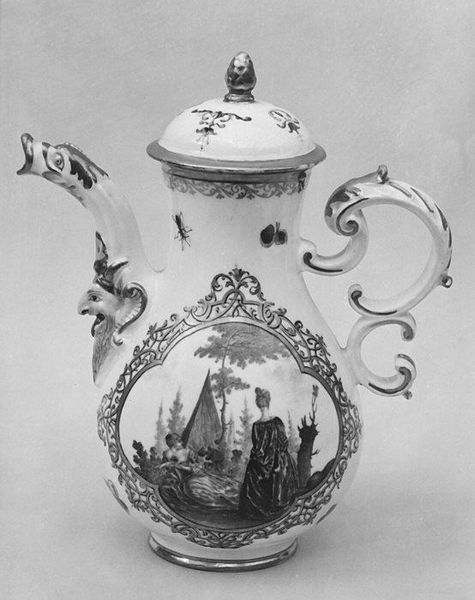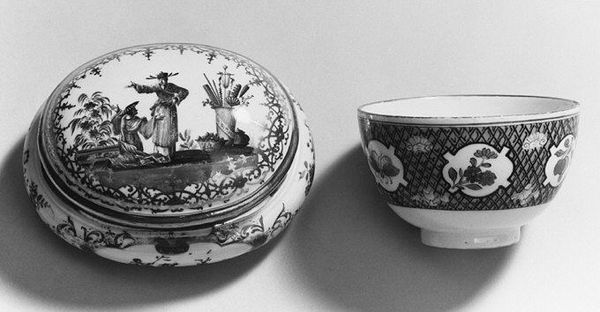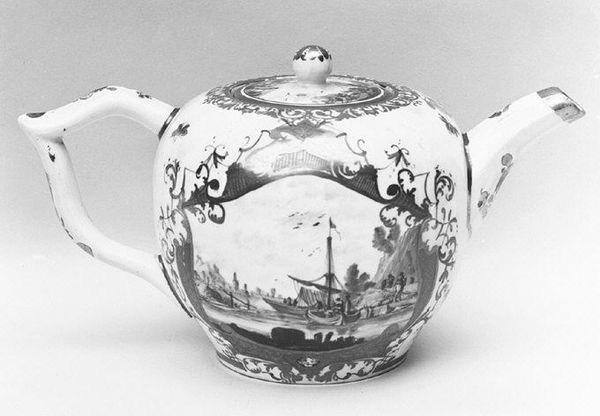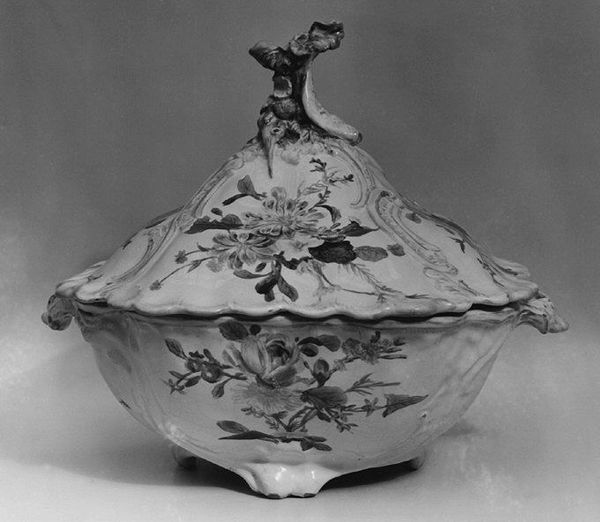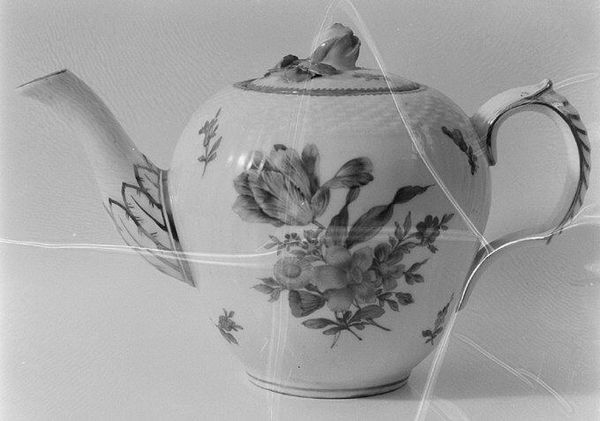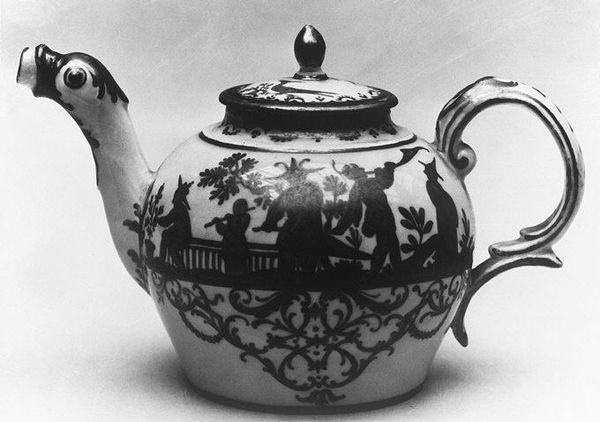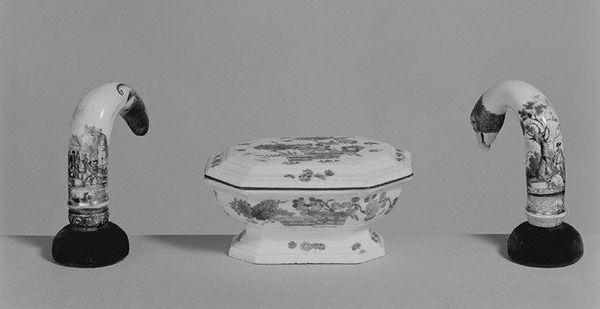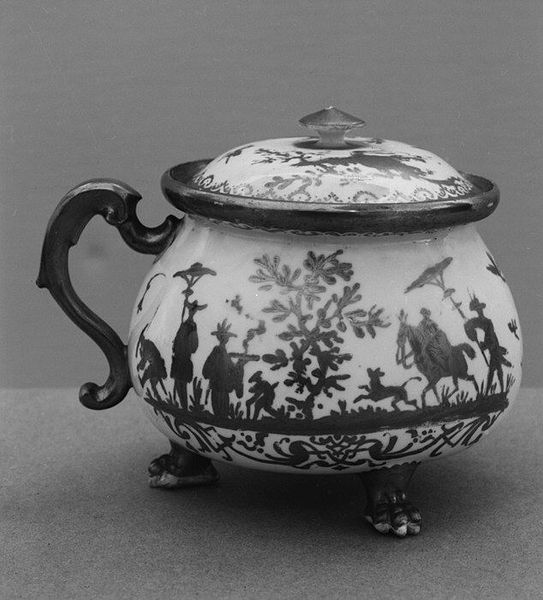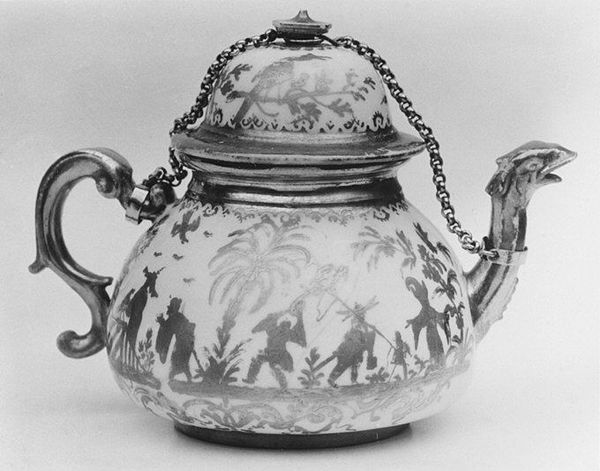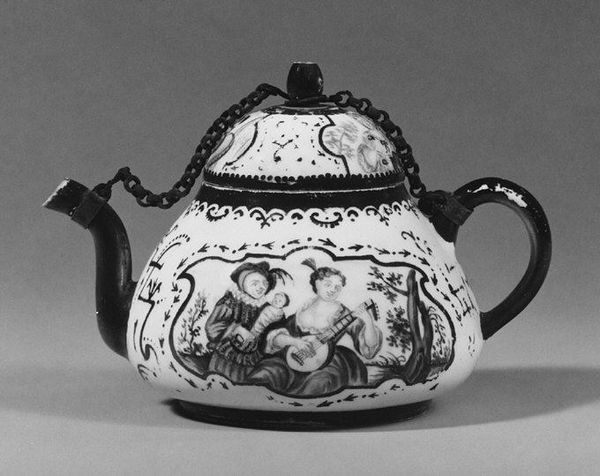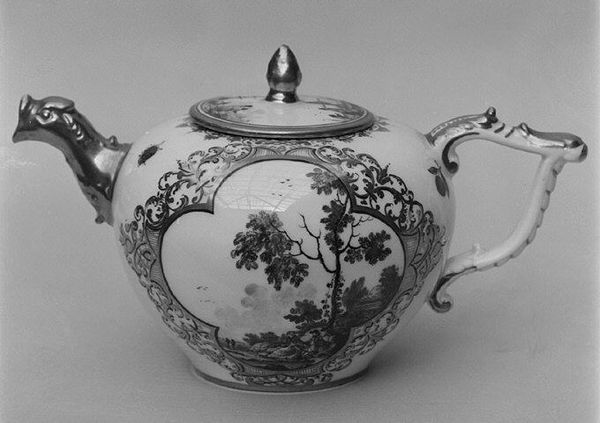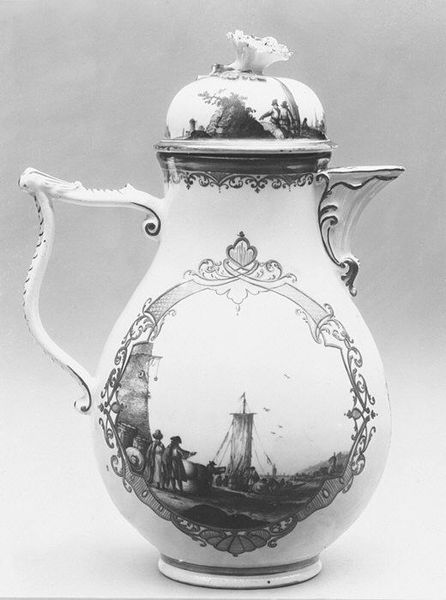
ceramic, porcelain, sculpture
#
baroque
#
sculpture
#
ceramic
#
porcelain
#
sculpture
#
genre-painting
Dimensions: Height: 4 1/4 in. (10.8 cm)
Copyright: Public Domain
Curator: Welcome! Before us is an example of German craftsmanship dating from 1720 to 1730. It’s a porcelain teapot produced by the Meissen Manufactory, now residing here at the Metropolitan Museum of Art. Editor: It feels… precariously poised between refinement and whimsy. The metallic handle contrasts strikingly with the delicate porcelain body, making it look rather ceremonial. Curator: Exactly. The composition is predominantly defined by the porcelain's curvilinear form, with asymmetrical flourishes of decoration in what we call the Baroque style. The scenes painted onto the body break up the visual field pleasingly. Editor: What narratives are being presented in the decoration, do you think? Those figures seem to be engaged in leisure, or perhaps… ritualized consumption? It looks like some kind of Orientalist fantasy about leisurely pursuits. Are those figures even presented with cultural sensitivity? Curator: Good eye! You have hit upon a key aspect. The painted decoration utilizes motifs derived from genre-painting traditions, combined and stylized. It's worth noting that Meissen was at the forefront of European porcelain production. The "genre" scenes were quite a draw for the fashionable consumers. Editor: Right. Tea culture itself was heavily implicated in exploitative trade dynamics of the era. It wasn’t merely decorative, its aesthetic and commercial appeal normalized resource extraction and cultural appropriation. Curator: From a purely formal perspective, the handle also contrasts interestingly with the spout, creating visual interest as they balance each other out in terms of weight and form. The shape echoes traditional metalwork. Editor: That bird-like spout, which you read formally, reminds me that it is impossible to truly separate art from socio-cultural narratives. I see the melding of status symbols, commercialism, and the aesthetic object, but also something far darker and more troubled by the context in which the work was born. Curator: Thank you. Considering the construction, design and cultural narratives is vital for this experience! Editor: And thanks for clarifying! Understanding the complex exchange helps provide an important historical dimension for everyone.
Comments
No comments
Be the first to comment and join the conversation on the ultimate creative platform.
